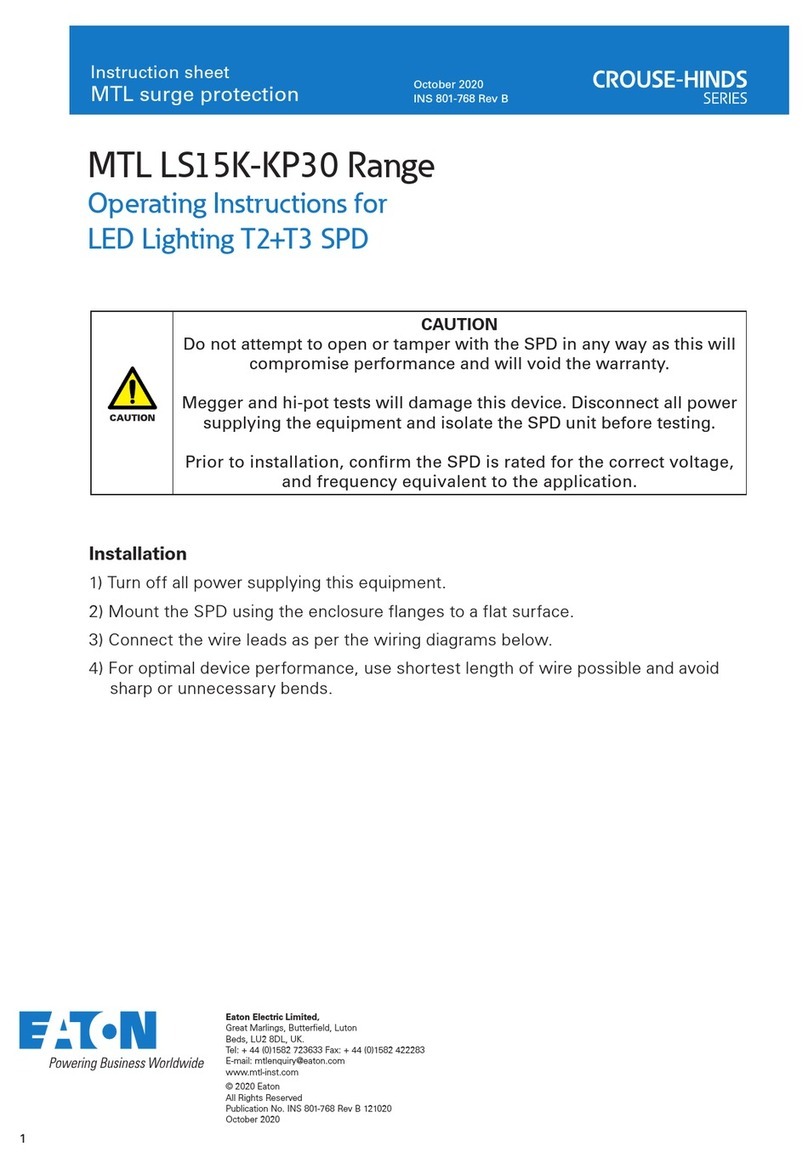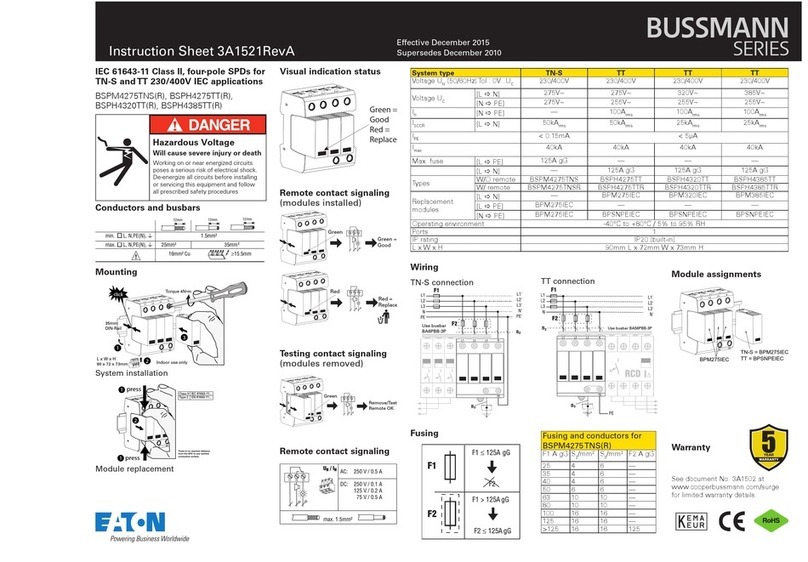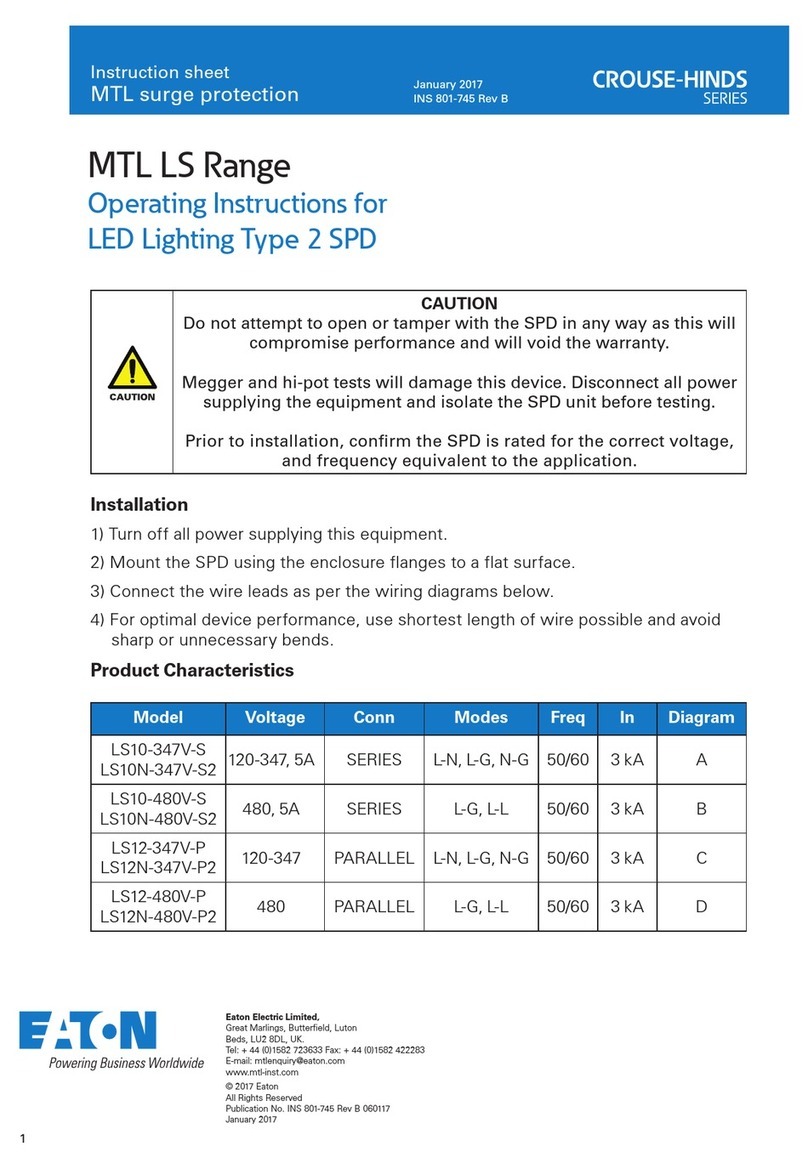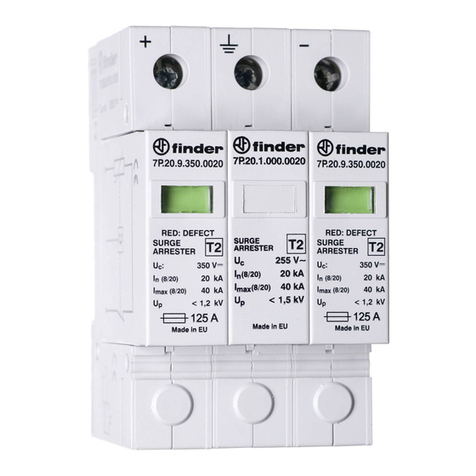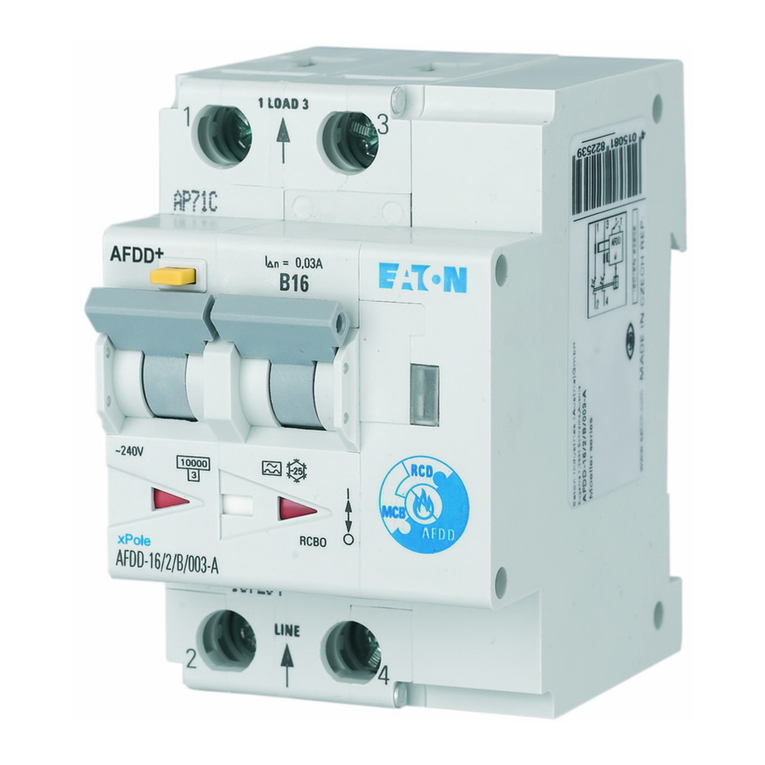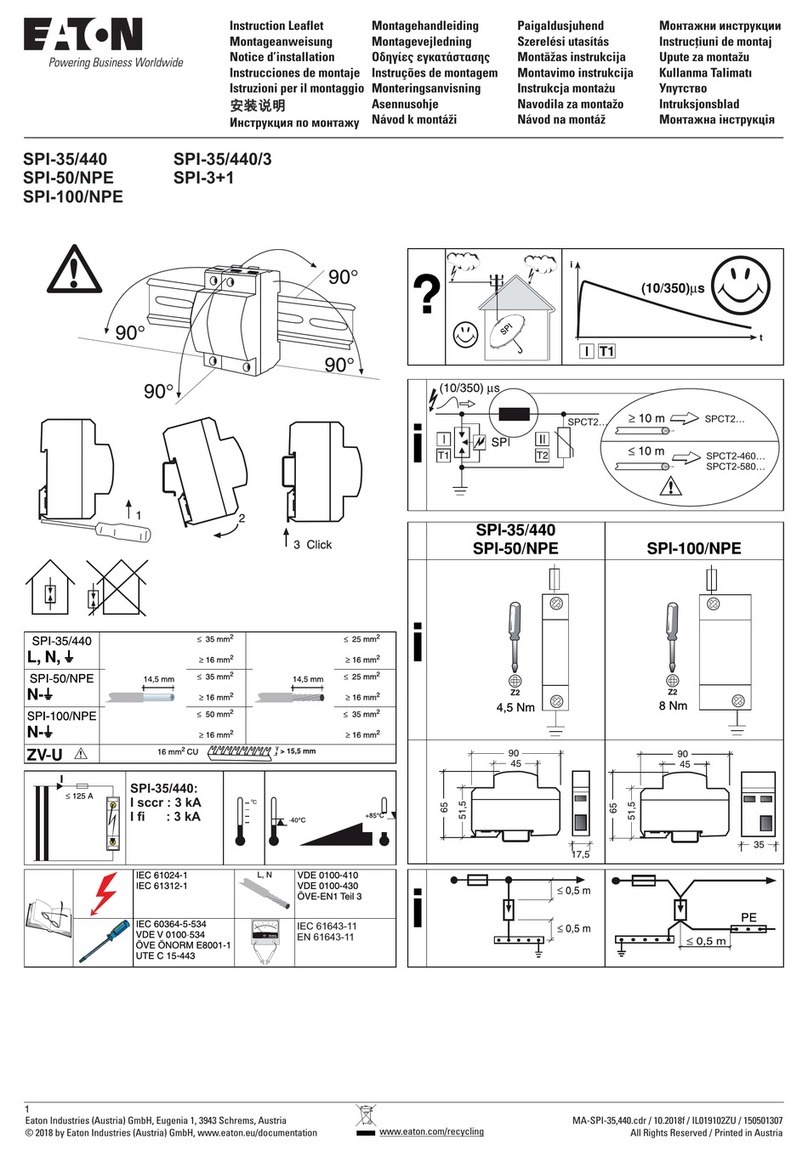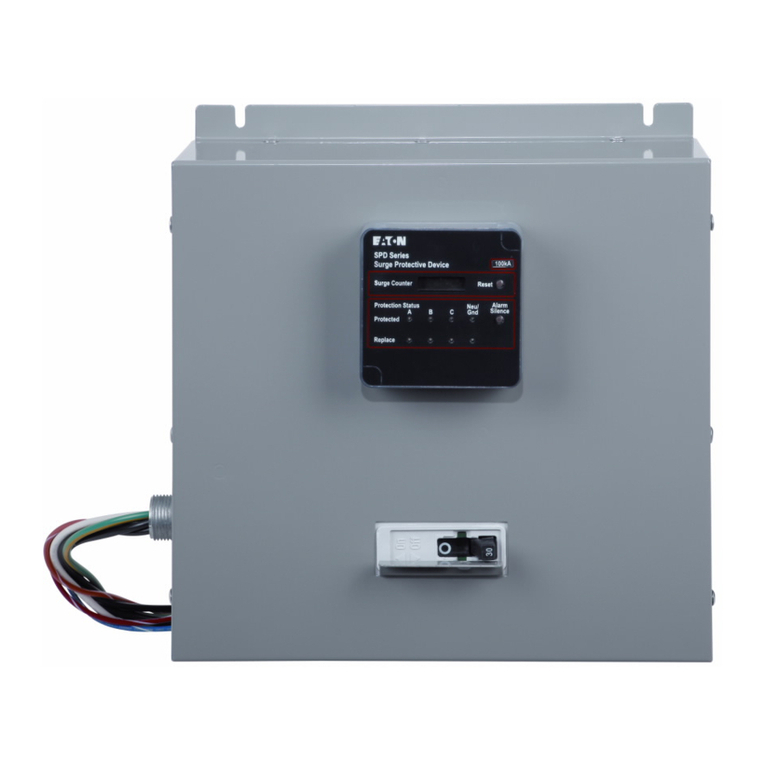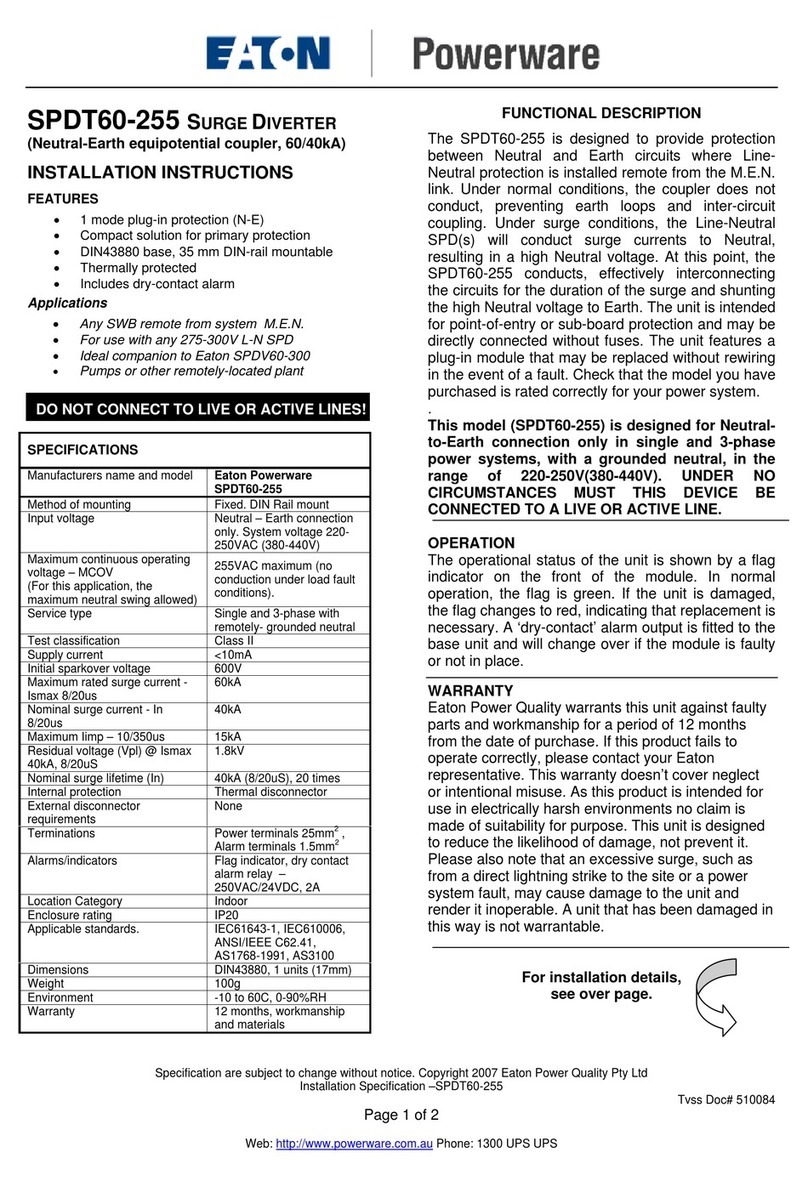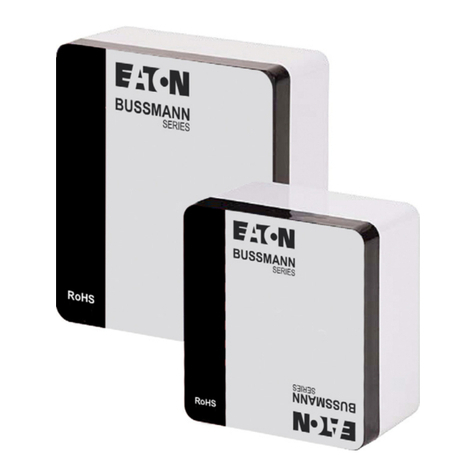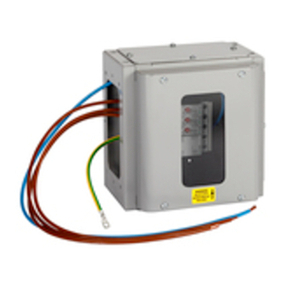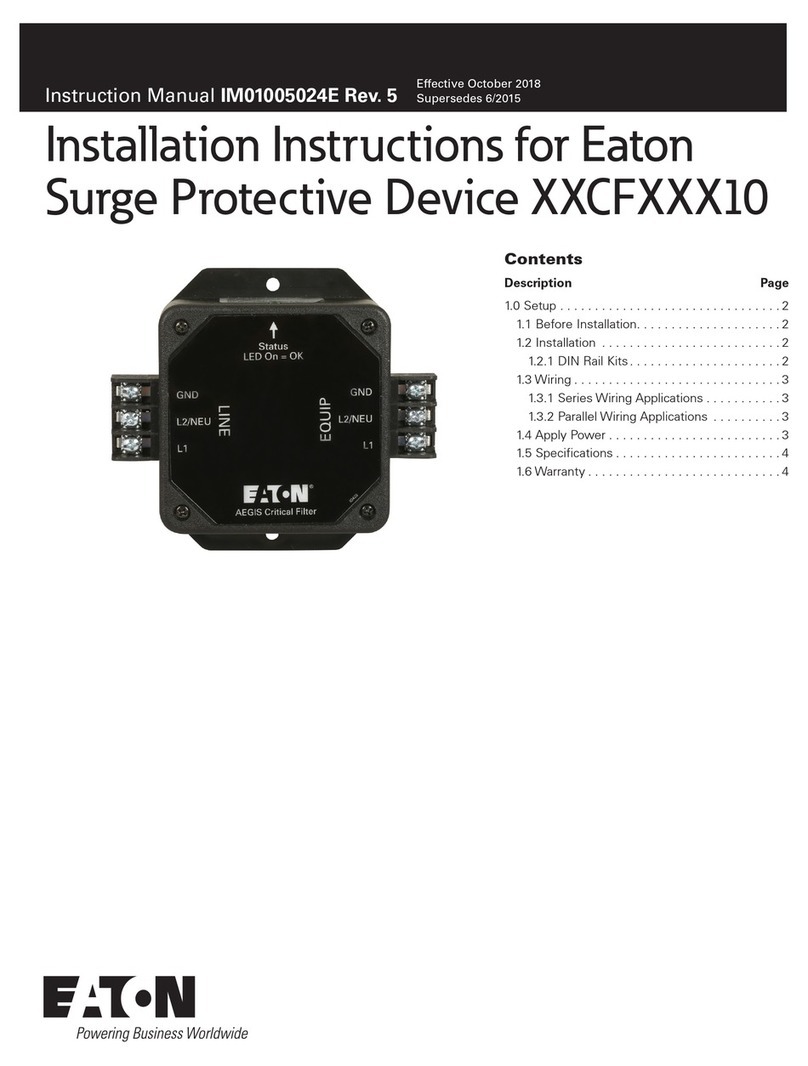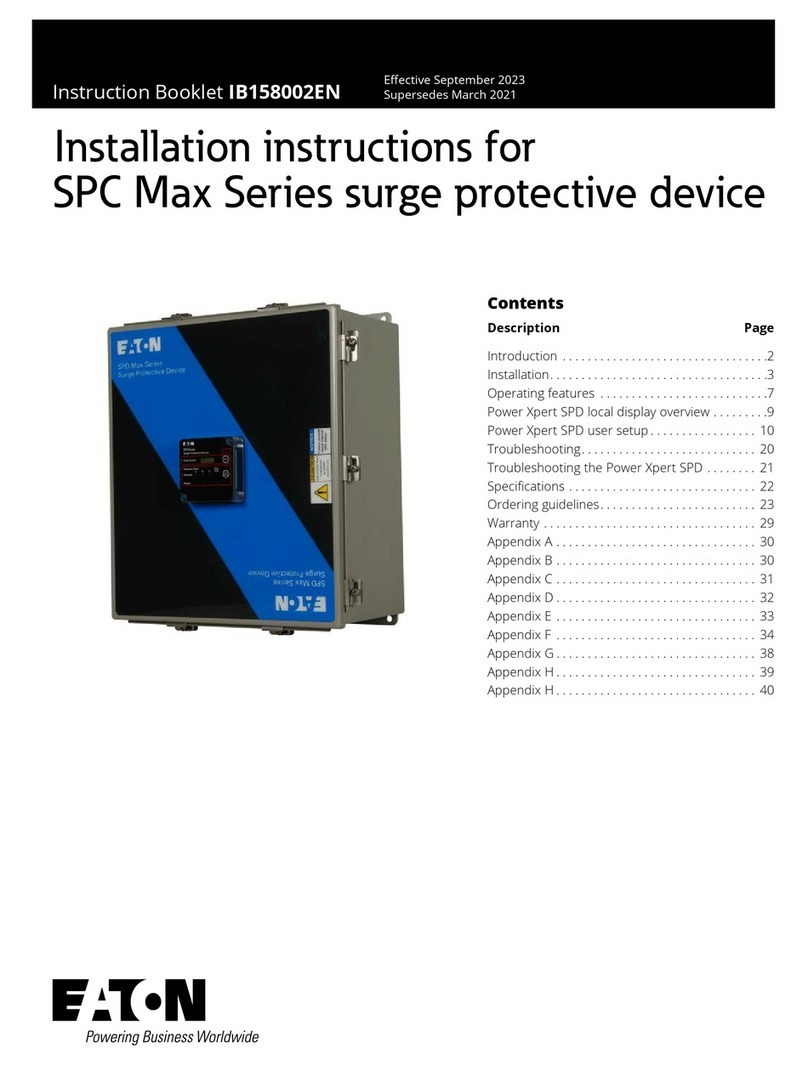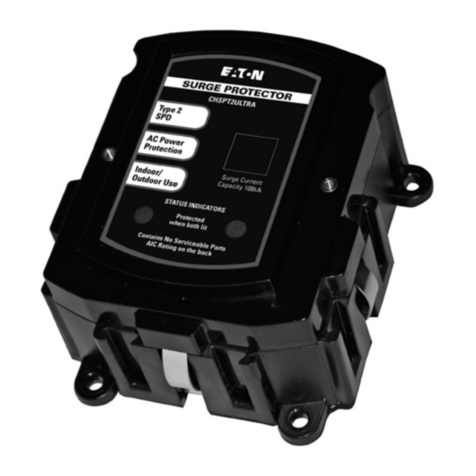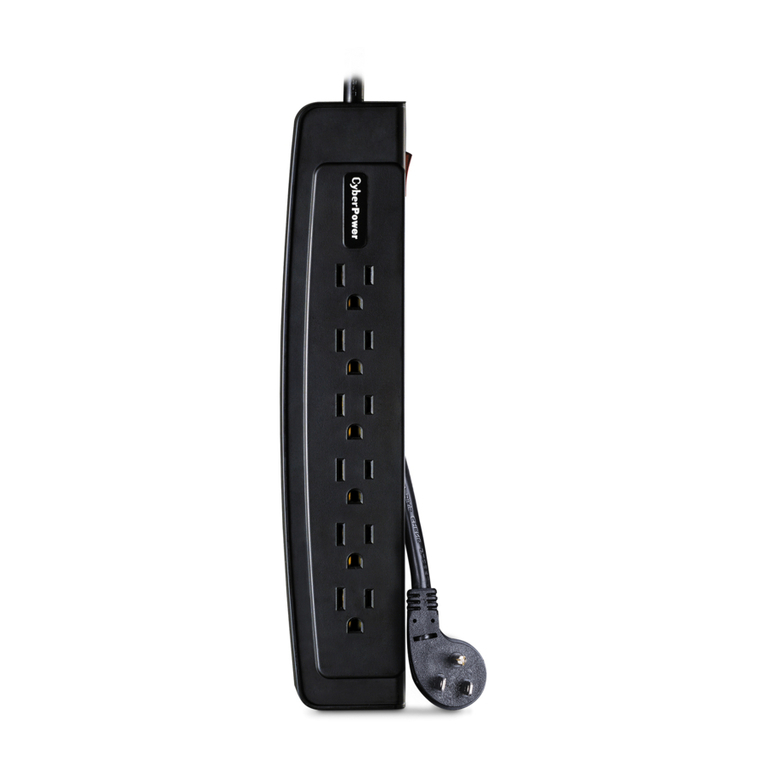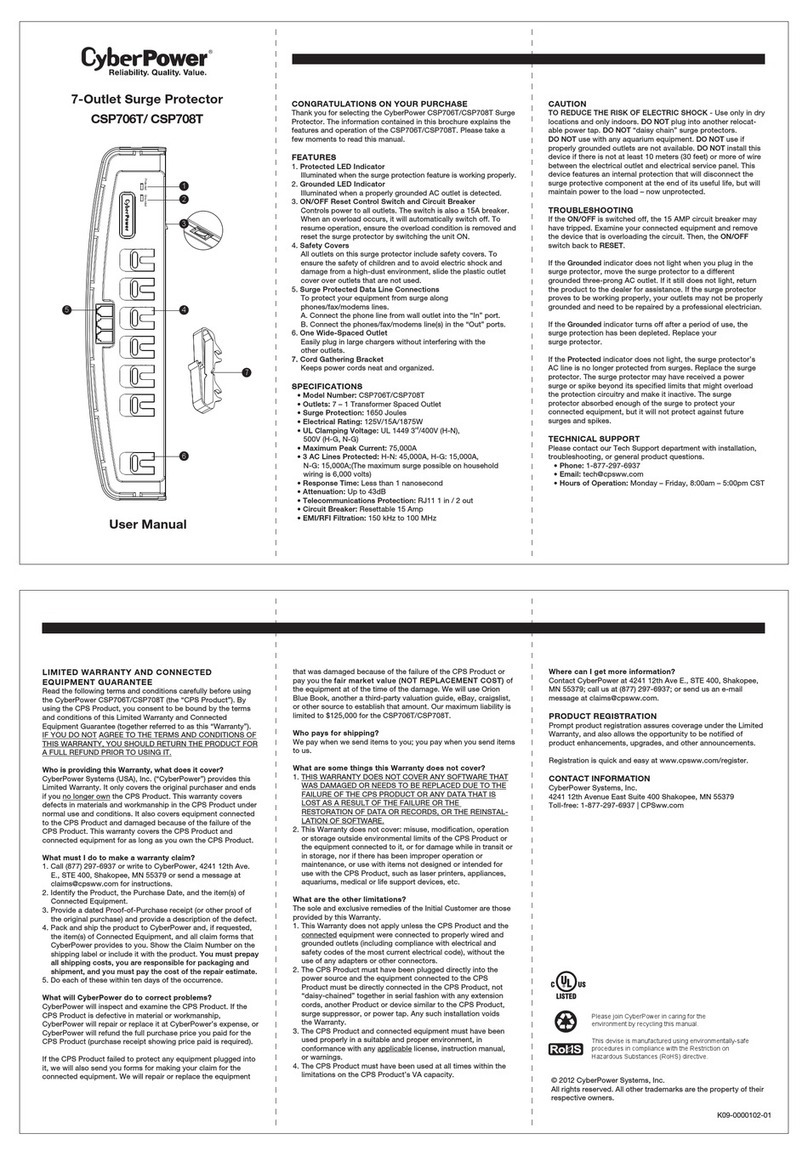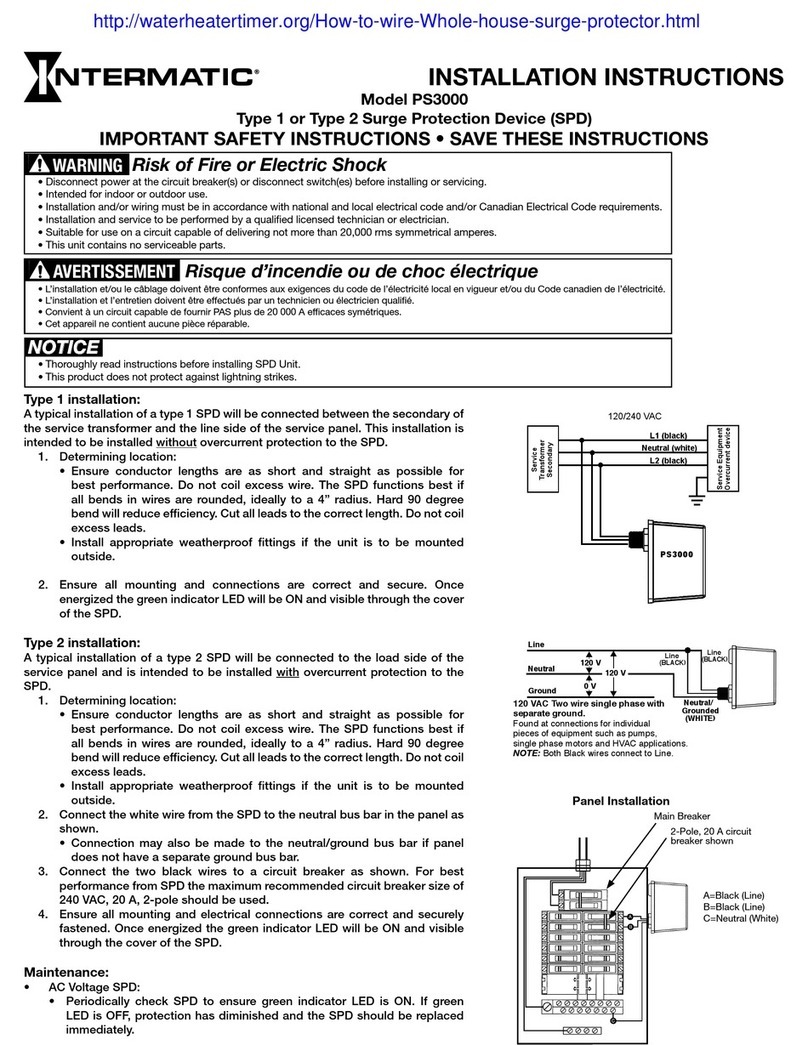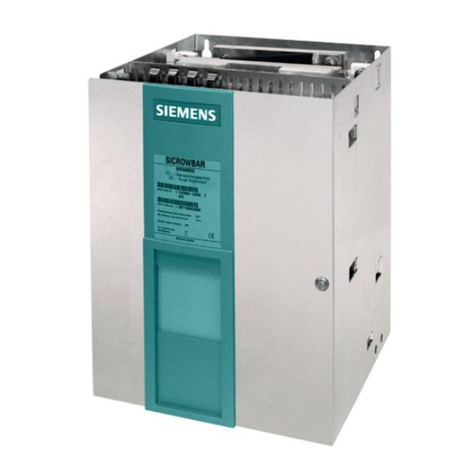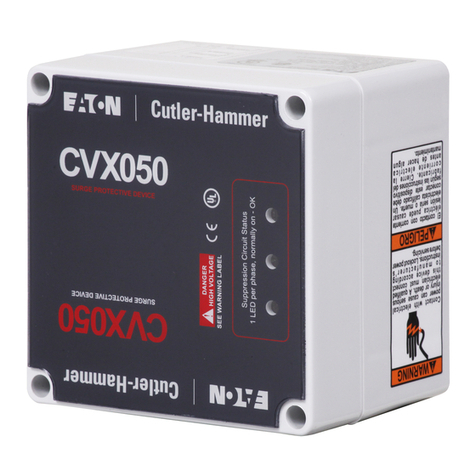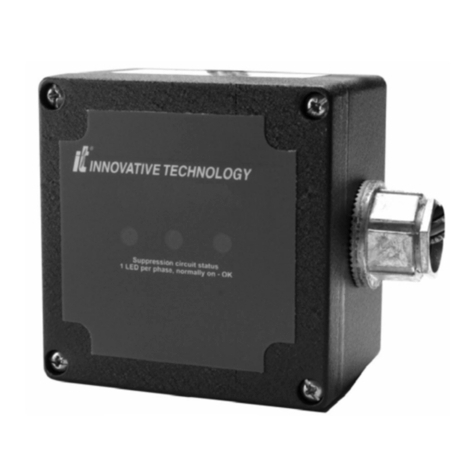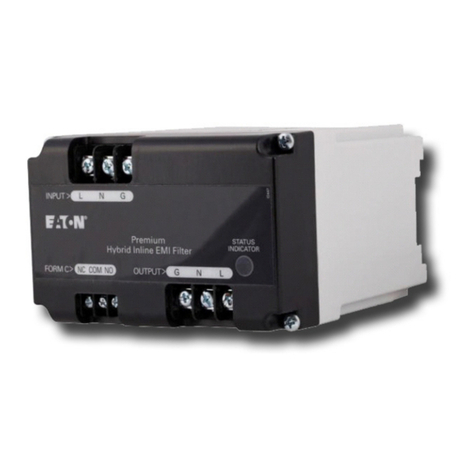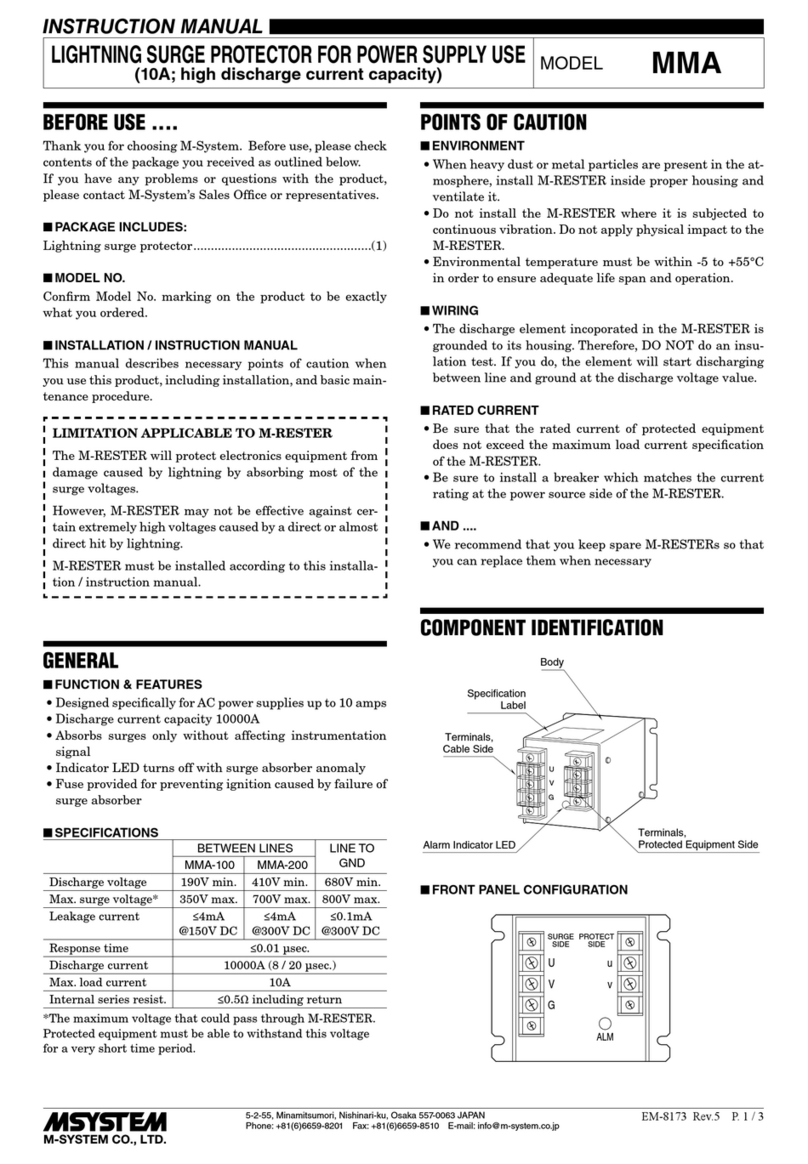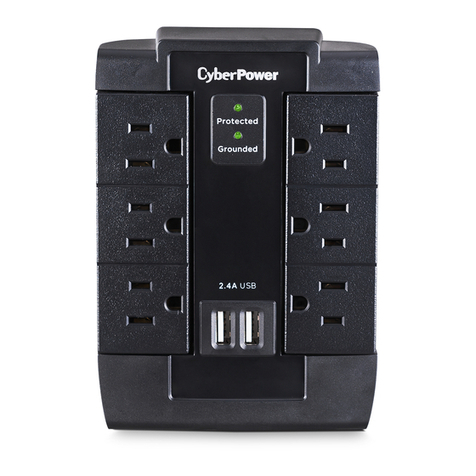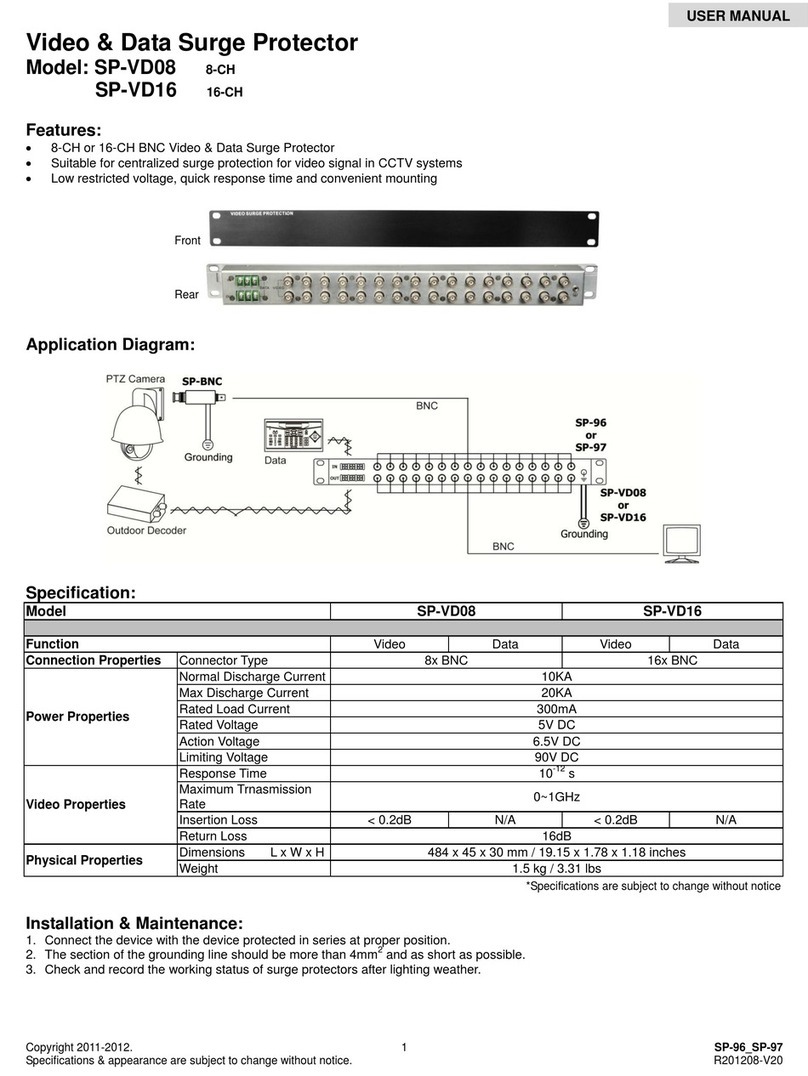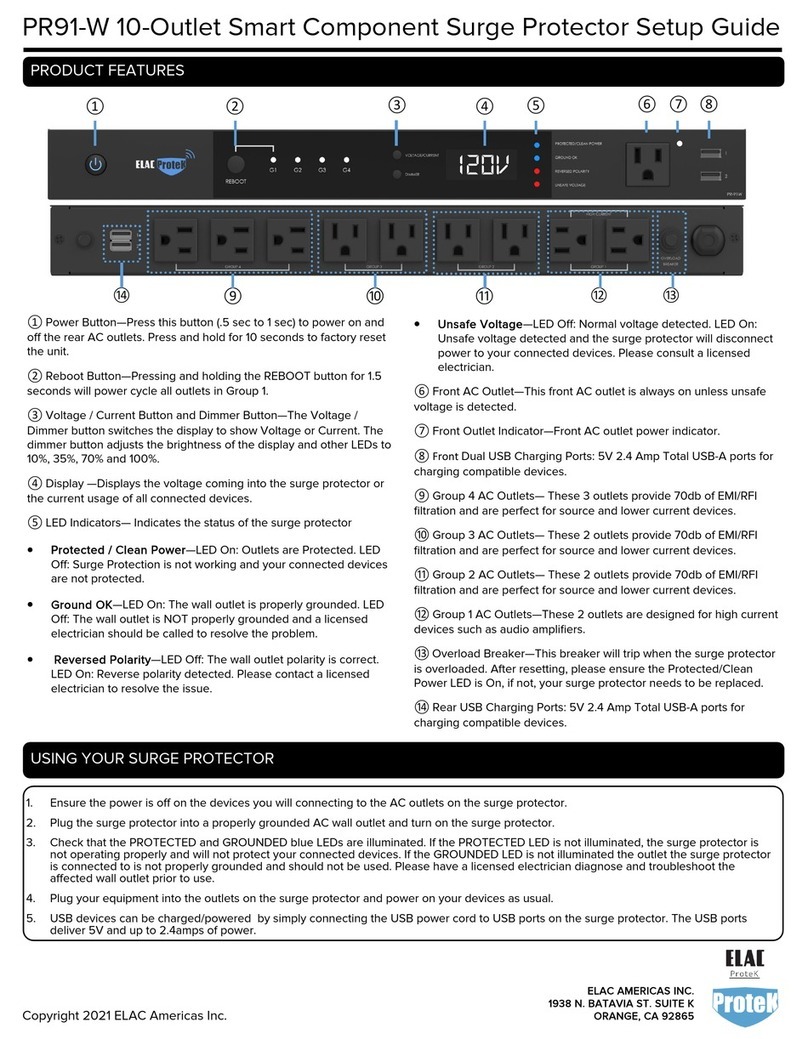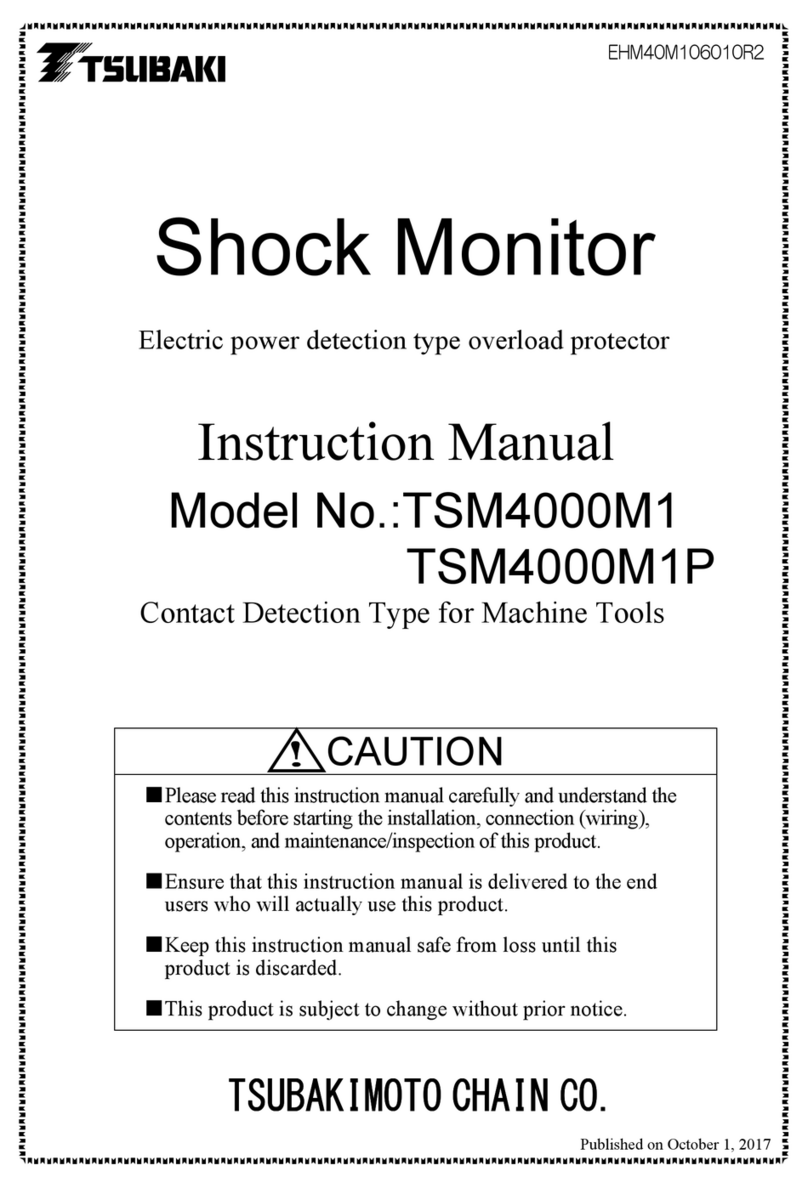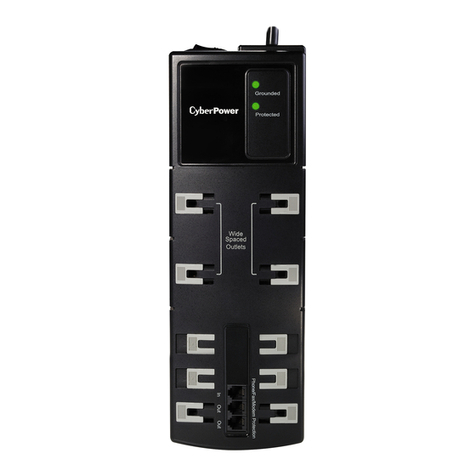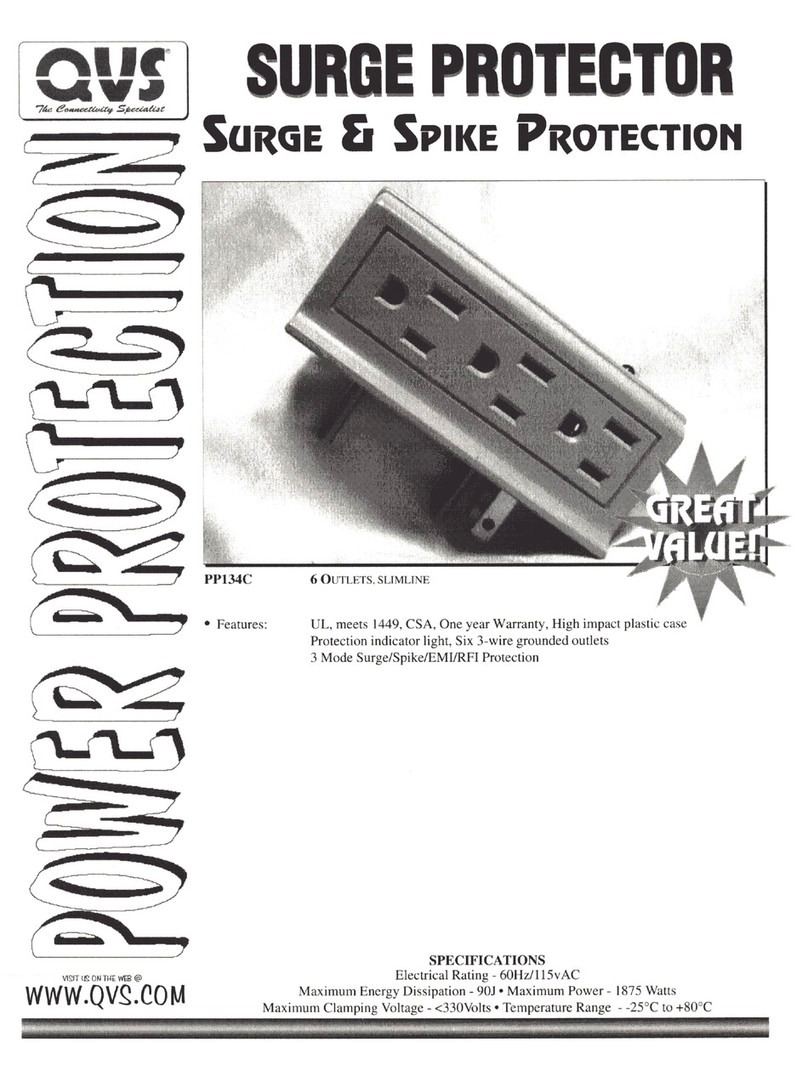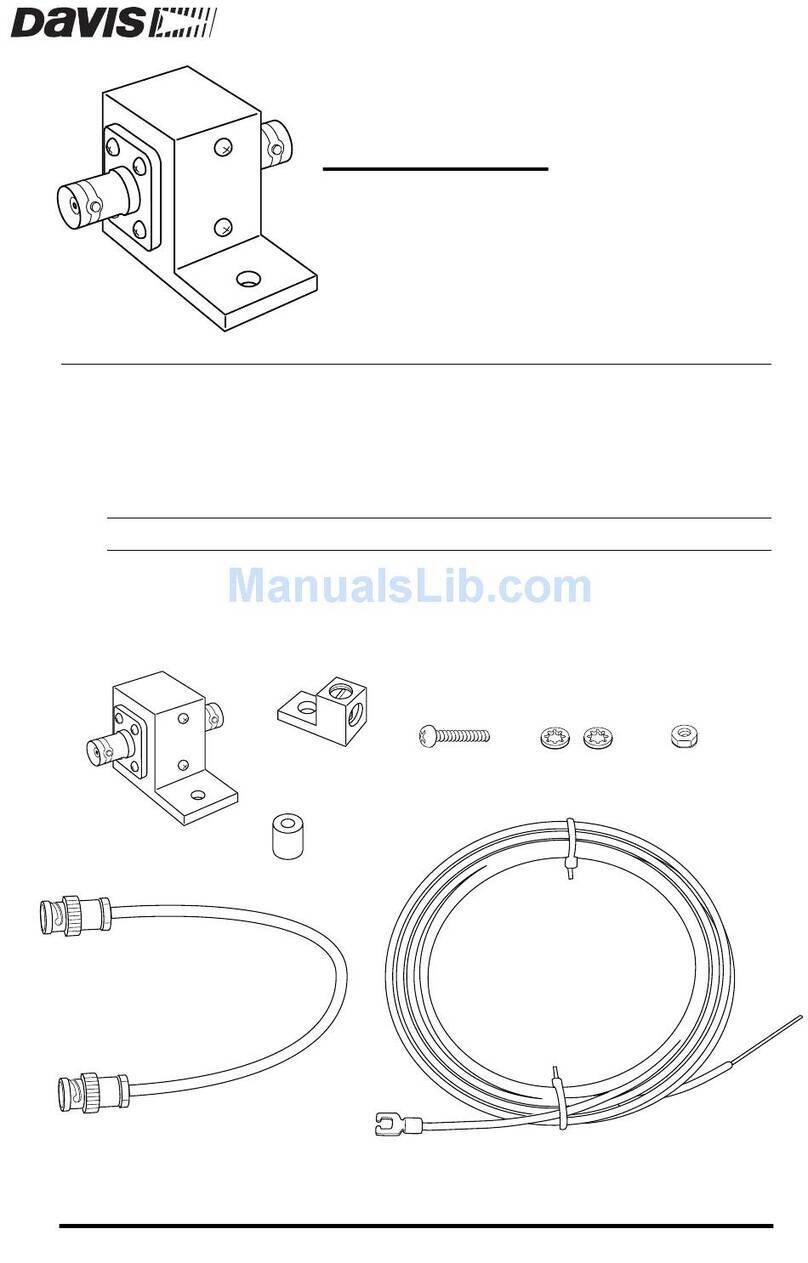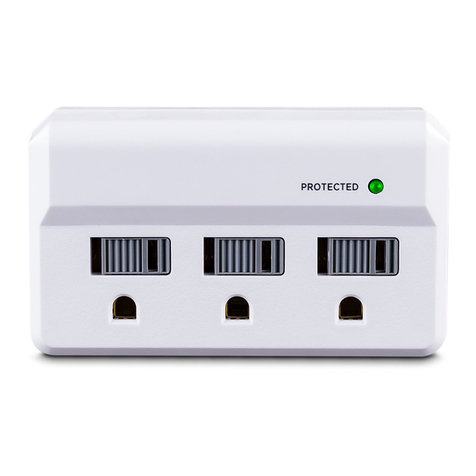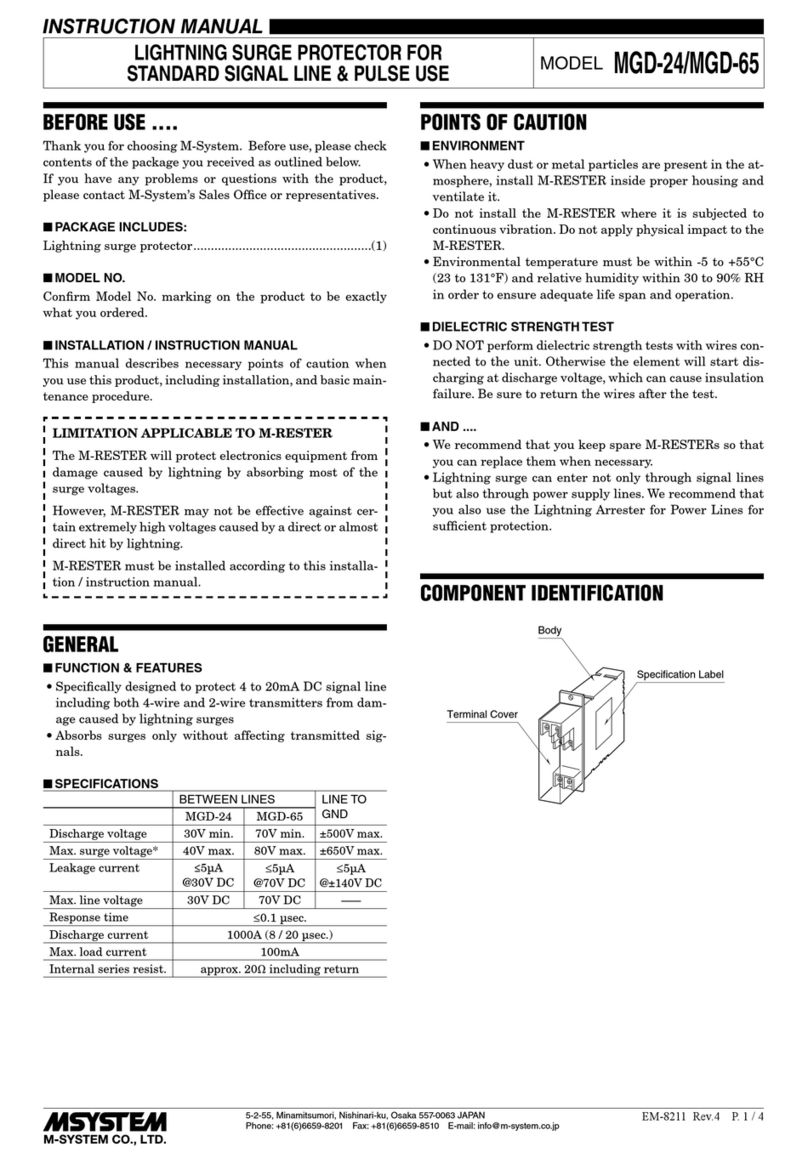
Application Paper AP158002EN Effective August 2015
Installing surge protective devices with
NEC Article 240 and Feeder Tap Rule
Introduction
This technical application note addresses the
installation requirements for a surge protective
device (SPD) when used with an overcurrent
protection device (OCPD). Applicable NFPAT
70 standards, National Electrical CodeTrules
(NECT), Authority Having Jurisdiction (AHJ), ANSI/
ULT1449 ratings, and installation practices are
discussed.
NEC Article 240.4 (overcurrent
protection) protection of
conductors
Article 240.4 states all conductors, other than
flexible cords, flexible cables, and fixture wires
shall be protected with an OCPD in accordance
with their ampacity rating specified in Article
301.15, unless otherwise permitted or required in
Article 240.4(A) through (G). This article applies to
conductors extending beyond the switchboard,
switchgear, or panelboard that are used to connect
an SPD to an electrical system. Connecting an
externally mounted or side mounted SPD directly
to a system bus without an OCPD is a direct
violation of the NEC and can lead to safety and
liability concerns. Acceptable OCPDs are listed
circuit breakers and fuses. There are exceptions to
this rule, see paragraph below titled SPDs
containing an internal OCPD and the Feeder
Tap Rule.
NEC Article 310.15 (conductors
for general wiring) ampacities
for conductors rated 0–2000 V
Article 310.15(B)(16) defines the rating of the
conductor ampacity that drives the maximum
rating of the OCPD to be used to protect the
electrical conductors. For example, #10 AWG
conductors 60 °C rated will require an
OCPD of 30 A.
ANSI/UL 1449 short circuit
current rating and
NEC Article 285.6
SPDs must comply with the ANSI/UL 1449
Standards for Safety Surge Protective Devices.
The SPDs short-circuit current rating (SCCR) is
determined as part of the ANSI/UL 1449 testing.
The SCCR defines the suitability of an SPD for use
on an AC power circuit that is capable of delivering
not more than a declared rms symmetrical current
during a short-circuit condition. This specification
defines the maximum level of available fault
current to which an SPD can be safely connected.
Article 285.6 requires that an SPD be marked with
its SCCR rating and the SPD shall not be installed
at a point on the system where the available fault
current capable of being delivered to the system
is greater than the SCCR of the SPD. For example,
an SPD marked with an SCCR of 50 kA shall not
be installed on a system capable of delivering
65 kA of fault current.
ANSI/UL 1449 testing with and
without an OCPD
When installing an externally mounted SPD,
the NEC requires that SPDs use an OCPD,
when Feeder Tap Rule is not utilized. Some
manufacturers may choose the use of an OCPD
to obtain their SCCR rating or successfully pass
the withstand test. For these devices that require
an OCPD, the installer must match the rating and
type of OCPD (breaker or fuses) that was used
during UL testing. For example, if a circuit breaker
was used during UL testing, the same circuit
breaker type (current limiting or non-current
limiting) and ampere rating must be installed in
the distribution equipment during the installation
of an externally mounted SPD. If fuses were used,
the fuse class and ampere rating must be the
same as used during UL testing. The OCPD
must be utilized in the installation to retain the
UL Listing.
Conversely, some manufacturers may not choose
the use of an OCPD to obtain their UL 1449
Listing. When installing these units, UL 1449
may not require the use of an OCPD but NEC
may require an OCPD. Some installers assume
and some manufacturers incorrectly promote that
such externally mounted units can be connected
directly to an electrical bus without overcurrent
protection. This practice is incorrect and is a direct
violation of the NEC. The conductors of these units
must be protected with an OCPD that is properly
rated according to NEC Article 310.15. The fact
that an SPD does not require a particular OCPD
to pass the UL 1449 testing does not negate the
need for one upon installation.
